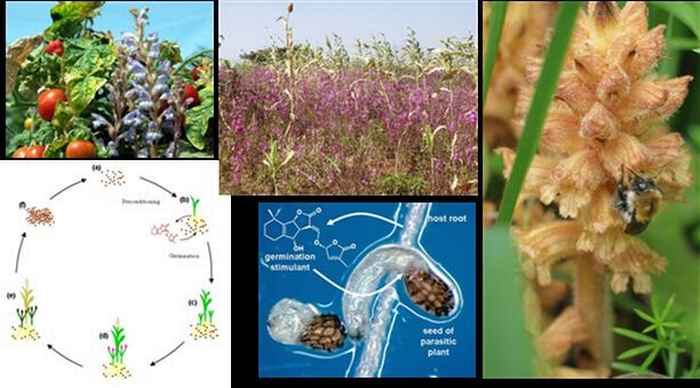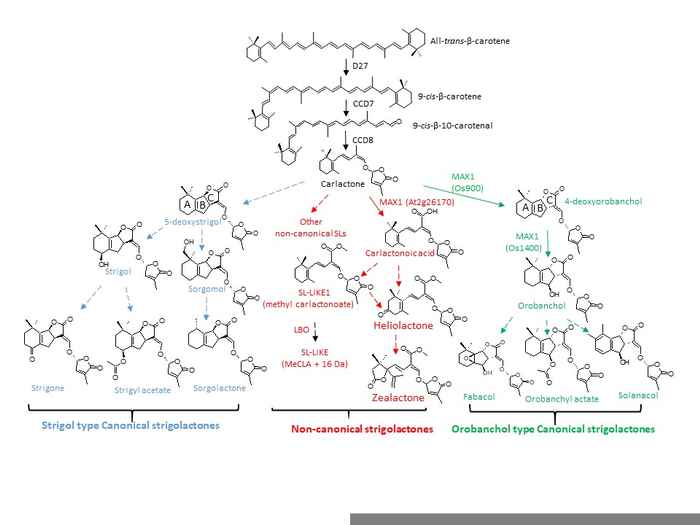Strigolactone biosynthesis and perception
Strigolactone biosynthesis and perception
An important example of signalling molecules that are used by plants for communication in the soil, are the strigolactones. These are used by the friends of plants, the symbiotic arbuscular mycorrhizal fungi, for host detection but also by their enemies, root parasitic plants. Furthermore, they have an endogenous signalling function, as a plant hormone that regulates shoot branching and root architecture. These positive and negative signalling roles of the strigolactones could be the result of a paradigm: enemies of plants recruit molecules that are essential to the plant as cues. This paradigm has two important implications: 1) other plant-produced signalling molecules known to be abused by plant enemies likely have another, beneficial essential function in plants and 2) the involvement of multiple, positive and negative, biological functions exerts a selective pressure on these signalling molecules that results in the evolution of diversity in structure and biological specificity. With an Advanced Grant of the European Research Council (ERC) we are addressing implication 2) by studying how biological specificity in strigolactones is mediated by the creation of structural diversity and the concomitant changes in the perception by receptors, in parasitic plants. Hereto, we study biosynthesis of strigolactones in tomato, maize and sorghum (also with support of the Chines Scholarship Council, CSC). With mutants and genetic transformation, we will create plants with strigolactone profiles that differ from wildtype to investigate what the biological relevance of individual strigolactones is. We also approach this from the other side by the application of strigolactones to the plant. In addition, we study the concomitant evolution in the perception of host strigolactones by Striga. For all this work, further improvement of the chemical analysis of strigolactones is essential, which we are trying to achieve through a combination of smart isolation and ultra-sensitive detection with support by NWO-ECHO. Our work on the strigolactones will shed light on the significance of structural diversity in signalling molecules and the co-evolution of perception. It should also provide the fundamental knowledge enabling biotechnological and agronomical applications to optimise colonisation by AM fungi and plant development, and control parasitation by root parasitic plants.

